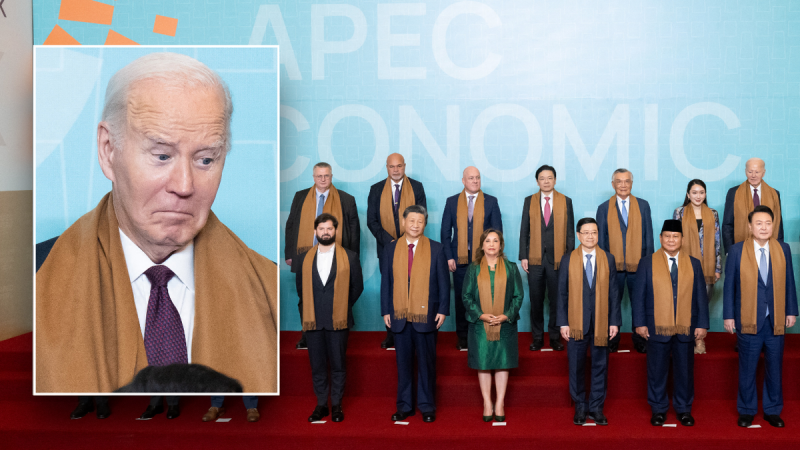In a recent incident at the Asia-Pacific Economic Cooperation (APEC) summit, President Joe Biden found himself in an awkward position as he stood towards the back of the group photo while Chinese President Xi Jinping confidently positioned himself front and center. The photo captured the attention of many, sparking discussions and speculations about the dynamics between the leaders of the two global superpowers.
Given the history of tensions between the United States and China, every interaction and gesture between their leaders is carefully scrutinized. The positioning in a group photo may seem trivial, but it can carry symbolic and diplomatic significance. In this case, President Xi taking the central spot and President Biden ending up in the background raised questions about power dynamics and leadership stature on the international stage.
Body language experts have noted the significance of non-verbal cues in political interactions. The positioning in a group photo is often a subtle indicator of status and hierarchy among leaders. In this particular instance, President Xi’s move to the front of the group may be seen as a display of confidence and assertiveness, while President Biden’s position in the background could be interpreted as a more reserved or accommodating approach.
Moreover, the optics of the photo do not exist in isolation. They are viewed against the backdrop of escalating tensions between the US and China on various fronts, including trade, technology, human rights, and geopolitical influence. The APEC summit provided a stage for both leaders to showcase their respective visions and priorities for the region and the world.
The visual contrast in the group photo may also fuel domestic and international narratives about each leader’s standing and effectiveness. For President Biden, being seen in a less prominent position could invite criticism about his leadership style and ability to assert American interests on the global stage. Meanwhile, President Xi’s central placement could be perceived as a visual representation of China’s growing influence and assertiveness in international affairs.
However, it is essential to recognize that a single photo captures only a moment in time and may not fully reflect the complexities of diplomatic relationships and international politics. Leaders engage in a wide range of interactions, negotiations, and engagements behind closed doors that shape the course of bilateral relations and global affairs.
Ultimately, while the positioning in a group photo can capture attention and spark interpretations, its true significance lies in the broader context of diplomatic relations, policies, and actions taken by leaders on the world stage. As the US-China relationship continues to evolve, it is crucial to look beyond superficial gestures and symbols to understand the underlying dynamics shaping the future of international geopolitics.
